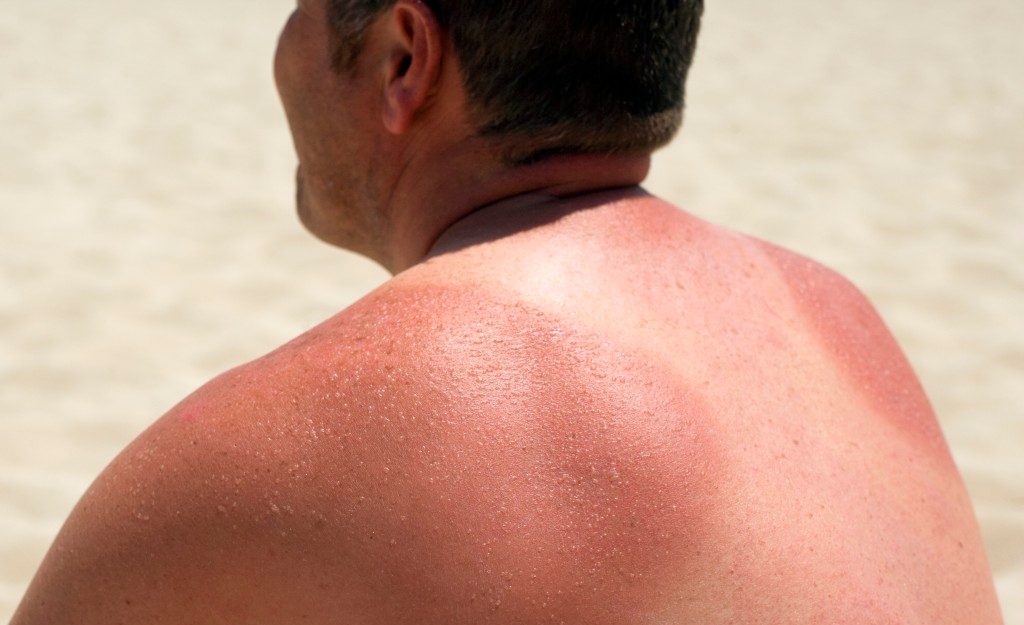Does Your Sunscreen Do What It Advertises?

We’re more aware than ever that too much sun exposure can damage skin and promote cancer — but your sunscreen may not offer enough protection.
When sunscreen was introduced in the 1950s, it was promoted to keep your skin from burning while allowing you to bake in the sun until you were super tanned. One famous marketing catchphrase, “Tan Don’t Burn,” advertised suntan lotion with large billboards featuring darkly tanned folks, especially children, happily playing in the sun.
This pervasive summer slogan was lacking in research and incredibly naïve in the context of skin damage and cancer. Millions of people were gambling with their health for a tan.
Today, you are undoubtedly aware that excessive sun exposure is dangerous and raises your risk of skin cancer; tanning in itself damages your skin.
The sun, tanning beds, and sunlamps all expose your skin to ultraviolet (UV) radiation. That’s what causes early aging of skin and damage that raises your risk of skin cancer, the National Cancer Institute (NCI) points out. What’s more, it’s important to know UV radiation is reflected by water, sand, ice, and snow. It can even cause damage through windows and windshields.
That’s why the NCI advises people of all ages to limit the time they spend in the sun, especially between mid-morning and late afternoon, and to avoid the other sources of UV radiation. When it comes to protecting your skin, it’s also key to use sunscreen regularly, not just when you are at the beach.
It also doesn’t matter if you are a person of color or if you have light or olive skin that tans easily. People of all skin tone can develop skin cancer from too much UV exposure, the NCI warns.
YOU MIGHT ALSO LIKE: Skin Cancer Symptoms
How to choose a sunscreen
Sunscreen was developed so you can be in the sun and stay relatively safe, even at the beach. Yet wearing sunscreen doesn’t just mean you are magically protected from sunburn and damage from the sun if you are in the sun longer than recommended.
Use sunscreen with an adequate SPF (sun protection factor). The SPF number tells you how long the sun’s UV rays would take to redden your skin if you use sunscreen as directed, compared with the amount of time it would take to start getting a sunburn without sunscreen protection.
For example, if you use a sunscreen with an SPF 30 product properly, it would take you 30 times longer to burn than if you didn’t use sunscreen. You also need to use enough (about one ounce for an adult) and cover all exposed skin. Reapply the product very two hours if you are outdoors.
To adequately protect your skin, use a sunscreen with an SPF 15 or higher daily, the Skin Cancer Foundation advises. That can reduce your risk of developing squamous cell carcinoma by about 40 percent and lower your melanoma risk by 50 percent. If you are going to be outdoors all day, use a SPF 30 or higher sunscreen.
Can you believe sunscreen labels?
Back in 2014, researchers found some tests of sunscreens showed the lotions didn’t measure up to the SPF they claimed to offer. In fact, a French investigative team found up to a third of sunscreen manufacturers overestimated the SPF protection of their sunscreens. The Environmental Working Group has issued additional concerns in recent years, noting that some additives to sunscreens might be absorbed through the skin and be carcinogenic and disrupt hormones.
The good news is the U.S. Food and Drug Administration (FDA), which regulates sunscreens to help make sure that consumers have access to safe and effective sun protection products, is actively studying updated proposed requirements for sunscreens, including whether certain chemicals should not be used in products.
Given the recognized public health benefits of sunscreen use, the FDA says: “Americans should continue to use sunscreen with other sun protective measures as this important effort moves forward.”
The FDA also emphasizes that broad spectrum sunscreens with SPF values of at least 15 are just one part of a skin-cancer prevention strategy. Other ways to protect yourself from excess sun including:
- Wearing protective clothing that adequately covers your arms, torso, and legs
- Wearing sunglasses and shading your whole head
- Heading for shade whenever possible during periods of peak sunlight
Updated:
July 21, 2022
Reviewed By:
Janet O’Dell, RN